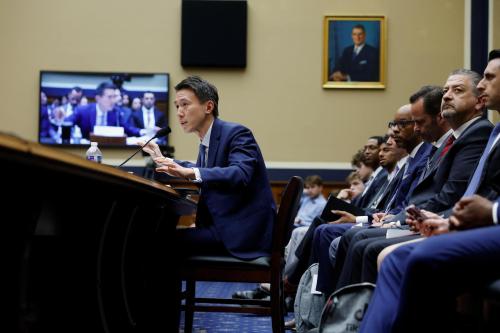In the wake of the financial crisis of 2007-2009, Congress passed the Dodd-Frank Act in 2010, which called for increased capital and liquidity for banks, restrictions on proprietary trading, and enhanced supervision for large banks. Dodd-Frank increased federal regulation over finance, creating three new regulators. The Financial Stability and Oversight Council was created to oversee the financial sector and the Office of Financial Research was set up to provide better information to regulators on the potential risks in the system. The Consumer Financial Protection Bureau was created to ensure consumers are not exposed to unsafe or misleading financial products and to expand federal oversight to non-bank consumer finance providers.
Republicans in Congress opposed the Dodd-Frank Act and have recently proposed an alternative: The Financial Choice Act sponsored by Jeb Hensarling, the Chair of the Financial Services Committee of the House. The Hensarling proposal offers banks an alternative to the Dodd-Frank framework if they choose to hold a 10 percent leverage ratio. The leverage ratio equals the amount of bank capital relative to all bank assets, with no risk adjustment, and the 10 percent figure would require most large banks to increase substantially the amount of regulatory capital they hold.
President-elect Trump has called for dismantling Dodd-Frank but also for the reinstatement of Glass-Steagall, the depression-era legislation that was functionally repealed at the end of the 1990s. Trump nominated Steven Mnuchin to be Secretary of the Treasury. Mnuchin has said that he sees good and bad parts of Dodd-Frank.
Even though there have been calls for easing regulation, there is considerable support on both sides of the aisle for being tough on financial institutions.
One important issue involves Title II of Dodd-Frank, the provision creating the Orderly Liquidation Authority and giving the FDIC the authority to provide liquidity funding as part of the resolution process for a failing institution. Title II is seen by some as a bailout provision and the Financial Choice Act repeals it and specifies that bankruptcy proceedings be used for all failing financial institutions. In bankruptcy, private funds (debtor in possession) have to be available if the institution is to keep operating. Opinion is divided as to whether financial stability could be preserved in a widespread crisis without backstop support from the federal government
Whatever proposals emerge from the new Administration and Congress, it seems clear that financial regulation will be a very important area in the next several years and one where Brookings can make an important contribution to the policy debate. The Center on Regulation and Markets Series on Financial Markets and Regulation will be edited by Martin Baily, the Bernard L. Schwartz Chair and Senior Fellow, and by Aaron Klein, Fellow in Economic Studies. Both Baily and Klein have written extensively on financial regulation and held senior positions at the White House and Treasury Department respectively. In addition, a first-rate team of outside experts is being put in place to contribute their views and analyses of evidence. These experts reflect a range of political and economic perspectives. We hope you will look for the contributions in 2017 and beyond in this new series from the Brookings Center on Regulation and Markets.




Commentary
Introducing the Series on Financial Markets Regulation
December 2, 2016